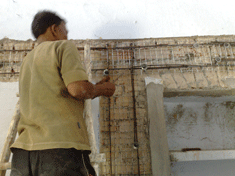|

Indian sub-continent is prone to natural hazards as depicted by the Vulnerability Atlas of India published by BMTPC and it has been enacted through Disaster Management Act that India needs to be pro-active rather than reactive as regards earthquakes, tsunami, etc. is concerned. It is also learnt from recurrent earthquake occurred for last two to three decades in Indian subcontinent that in order to have pro-active approach it is prerequisite that we prepare ourselves better for disasters by generating know-how, hazard scenarios, maps, vulnerability & risk analysis, retrofitting strategy and more and most importantly building capacities within.
Playing a pro-active active role in the area of disaster mitigation and management, BMTPC brought out first ever Vulnerability Atlas of India (2019, 1996 & 2006), Landslide Hazard Zonation Altas of India, Guidelines for Improving Earthquakes, Wind/Cyclone and Flood (1997 & 2010) prone Housing Construction and other promotional literature. With IIT Kanpur, BMTPC brought out easy to understand Earthquake Tips on various important aspects of earthquake resistant construction. The Council also conducted 10 region-specific disaster impact rapid assessment studies. The Vulnerability Atlas of India was recognized as a “Good Practice” by the UN-Habitat under Dubai International Awards for Best Practices for the year 2006. The e-copy of Vulnerability Atlas of India has been made available at websites for wider access by various stakeholders.
The MoHUA has launched an e-Course on Vulnerability Atlas of India which is offered by School of Planning and Architecture (SPA), New Delhi in collaboration with BMTPC. This course offers awareness and technical understanding about natural hazards such as earthquakes, cyclones, landslides, floods, etc. and helps to identify regions with high vulnerability and specifies district-wise level of damage risks to the existing housing stock.
To demonstrate seismic retrofitting techniques, BMTPC has been constantly undertaking seismic strengthening of lifeline buildings. A few of them are Kupwara Sub-Divisional Hospital in Jammu & Kashmir, a Primary School in Thano, Dehradun and 7 MCD Schools in Delhi. Earlier, the Council has demonstrated the disaster resistant technologies through construction of 478 model houses and retrofitting of 445 public buildings like schools, health centres and community centres in earthquake affected region of Gujarat besides providing training to 5500 masons and 50 field engineers just after the Bhuj earthquake of January 2001.
The Council is actively involved in preparation of Model Building Byelaws for safety against natural hazards and assisting the State/UT Governments in modifying their building byelaws by organising Technical Workshops on Model Amendments in Town and Country Planning Act, Zoning Regulation, Development & Control Regulation and Building Regulation for safety against natural hazards. The Council has successfully organized technical workshops in 24 States and UT’s.
Recognising the efforts of BMTPC in the area of vulnerability assessment, NDMA had awarded a project to BMTPC to extend the Vulnerability Atlas of India upto district level delineating Taluka boundaries. Under this, the Council prepared upgraded Earthquake Hazard Maps and Atlases for India, State/UT and District (626 Districts).
|